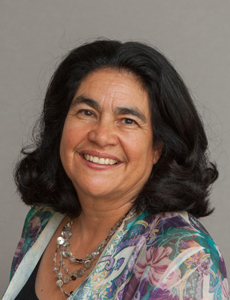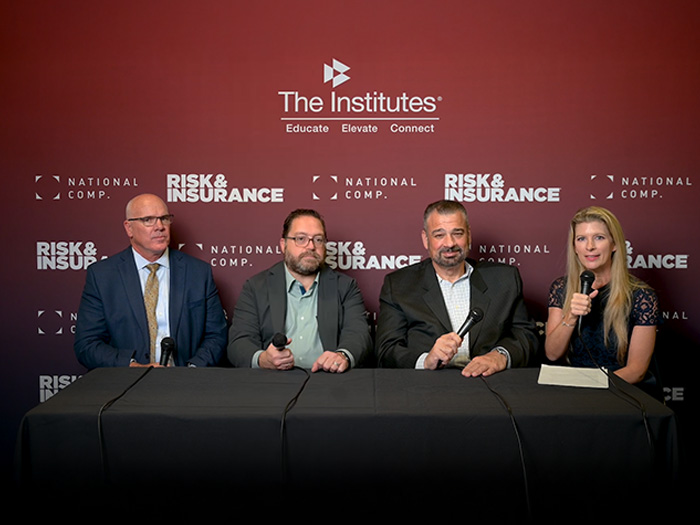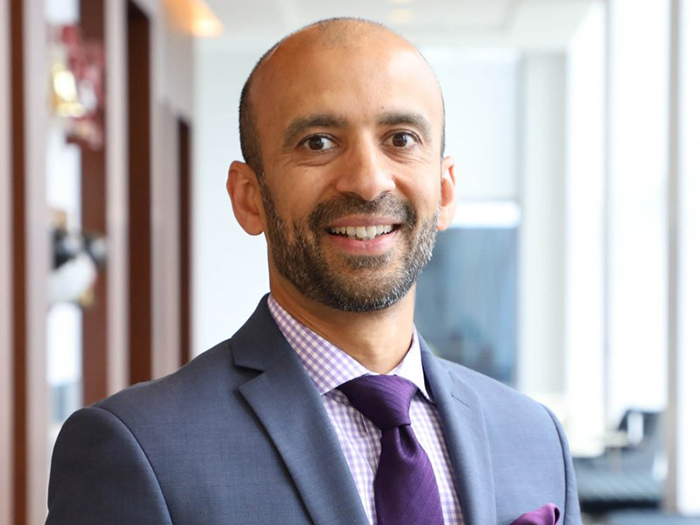Mandatory Professional Liability for Police Officers: How Insurance Can Step Up According to This Criminal Law Scholar

As the entire world scrutinizes the American justice system and police involvement in the deaths of unarmed black men and women, the insurance industry is in a unique place to exercise a market-based solution: Mandatory professional liability insurance for police officers.
This solution, proposed by Deborah Ramirez, a criminal law and procedure professor at Northeastern University School of Law, would require officers to be evaluated by actuaries to see if they have a high risk of using unjustified violence during police business. If deemed so, the officers would be required to hold a professional liability insurance policy in the hopes that the insurance would deter such behaviors.
This is not unlike high premiums in auto, which discourage dangerous drivers from taking to the road, or medical malpractice insurance, which encourages doctors to preform their very best every day.
Officers identified on an actuarial risk scorecard as a high risk for unjustified violence might be priced out of policing by premiums that reflect their actual risk.
Potential reductions or increases in premiums would incentivize police departments and officers to adopt policies, training and procedures proven to lower risk. Officers with lower risk assessments would accordingly enjoy lower premiums.
In advocating for this solution, Ramirez draws on her expertise in community policing and racial profiling, national security law, and race and racism in the law.
Risk & Insurance® recently spoke with her to gain insight into how insurance can help achieve the justice many are advocating for.
Risk & Insurance: What is the underlying dysfunction behind police misconduct?
Deborah Ramirez: The underlying problem is that police unions make it practically impossible for police chiefs to weed out police officers engaged in reckless and dangerous behavior from the officers who are doing a good job.

Deborah Ramirez, criminal law and procedure professor, Northeastern University School of Law
When an officer shoves a citizen or violates his civil rights, instead of the officer paying for the violation, taxpayers pay. The officer pays no consequences. That’s a problem.
Collectively bargained contracts require the city or municipality to pay costs related to police misconduct, including paid leave during investigations and paying all legal fees.
R&I: What is the solution?
DR: At the state level, we advocate for state legislators to restrict the scope of collective bargaining by police unions to prohibit issues related to disciple, termination, hiring, firing or allocation of costs for police misconduct. No police department or municipality should indemnify officers for misconduct, because then taxpayers pay.
At the federal level, I asked Congress to amend 42 USC §1983, the statute families use to get compensation and settlement, to say that no municipality or police department may indemnify police officers for conduct that violates this statute.
The End Qualified Immunity Act, which is pending in Congress, seeks to amend the statute to say that officers have no qualified immunity – a judicially created concept that makes it very hard for people to sue police officers for misconduct and civil rights violations – from prosecution under the statute.
R&I: How much do taxpayers pay for settlements and damages?
DR: We’re talking about a lot of money.
Chicago paid $350 million over eight years to settle police misconduct suits. New York City paid $384 million over five years. In Minneapolis, a single instance of police misconduct cost taxpayers $20 million.
An Australian woman called 911, because she thought a crime was afoot, and when she went outside, police shot her.
R&I: How would professional liability insurance work?
DR: As every driver needs insurance to drive legally, every police officer would need insurance to police.
Dangerous drivers are priced out of driving by high premiums, and police engaged in reckless or dangerous behavior would be priced out of policing by premiums that reflect the actual risk they pose.
Police departments would pay the average premium. Officers would pay any increase over the base premium caused by their reckless behavior.
If Congress amends 42 USC §1983 so that municipalities and police departments can no longer indemnify police officers for violations of statue and misconduct, police themselves will go to insurance companies and say, ‘Things have changed. We need professional liability insurance.”
R&I: How would insurers identify the risky officers?
DR: Actuaries would put objective factors into a risk assessment algorithm: Prior civil rights law violations, criminal convictions, domestic violence restraining orders, civil complaints, the sheer number of complaints – weighted by type, because they don’t all represent the same risk –unjust use of force reports, prior disciplinary hearings that resulted in discipline, unjustified discharge of weapon.
Most officers don’t discharge their weapon in the course of their careers. These are some of the things that tell you an officer engages in reckless or dangerous policing.
At one time, there was no requirement that doctors carry insurance. Now malpractice is a big part of the insurance market.
This system isn’t solely punitive. It’s the carrot and stick.
When the first indication of potentially dangerous policing comes in, like a DUI, we hope the insurer would offer treatment. The officer would get good points for treatment. If the officer says, “I don’t have a problem, I’m not getting treatment,” well, the premium goes up.
R&I: If this system had been in place, would it have saved lives?
DR: The officer who strangled Eric Garner in New York in 2014 had more sustained civil complaints than 98% of the NYPD. He had been disciplined twice. He had three lawsuits pending or settled before he strangled Eric Garner. The early warning signs were there.
The officer who killed George Floyd in Minneapolis had 18 prior complaints and two disciplinary proceedings that resulted in discipline. That’s higher than average. He was involved in three shooting incidents in 2006. In 2008, he opened fire on a suspect who was locked in a bathroom.
If the system of professional liability insurance were in place, the risk assessment would have indicated that these officers were already engaged in risky behavior. It would have saved lives.
R&I: Why is this the opportune moment for the insurance industry to introduce a market-based solution to police misbehavior?
DR: Because the political calculus has changed. Police unions are very powerful, but so are the courageous demonstrators on the street who will continue to march until they believe they have real reform.
State legislatures are thinking seriously about reform and so are federal lawmakers.
R&I: Many police departments already use training to change behavior. Why is that not enough?
DR: Any training that gives insurance points off should demonstrate empirically that it can change behavior. Any training should start with the understanding that we can’t change hearts and minds, but we can change behavior.
I’ve done some racial profiling data collection and training with police. One problem is that police get calls from dispatchers about black people in white suburbs and white people in black neighborhoods. They may not be doing anything wrong, but they look out of place.
We need to train dispatchers to tell the officer more about what’s going on. Is the suspect just walking or is he looking into windows and trying doorknobs and appears to be trying to break into a house? That would justify a stop. If you train officers to tell the dispatcher the race of the suspect and the reason for the stop, you will change police behavior.
R&I: What would you like to say to insurers?
DR: We’re at a critical moment, and the insurance industry can make a real difference. The industry can begin to think about what professional liability insurance for police officers would look like. It can publish papers. It can invite state legislators and congressional representatives to conferences, invite people like me to make presentations.
I’m happy to hear from detractors. Real change comes only when lots of people come together to roll up their sleeves and say, “Police misconduct is wrong. How do I make it right?” There’s a role for the insurance industry.
And there’s a big, new market. There are 18,000 police units in the country, plus state officers, federal officers, homeland security, secret service and FBI officers. That’s a whole new market.
At one time, there was no requirement that doctors carry insurance. Now malpractice is a big part of the insurance market. &










